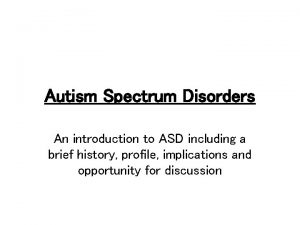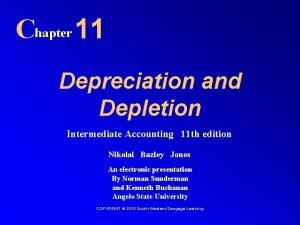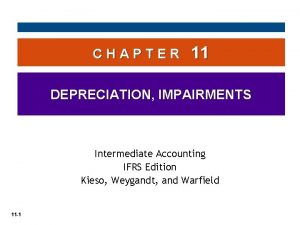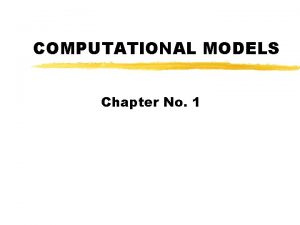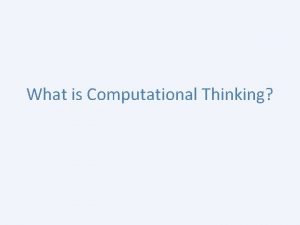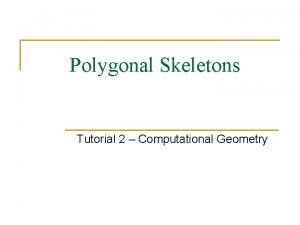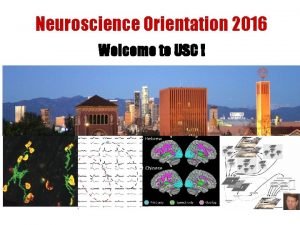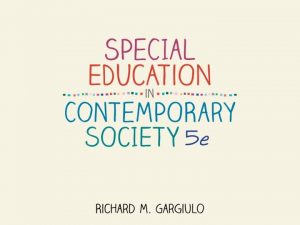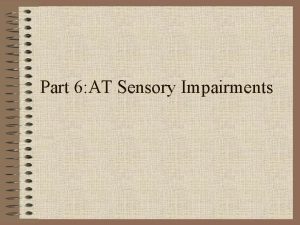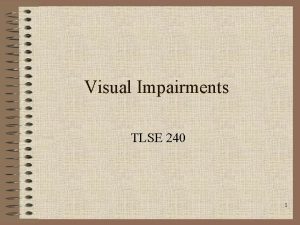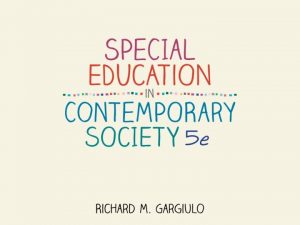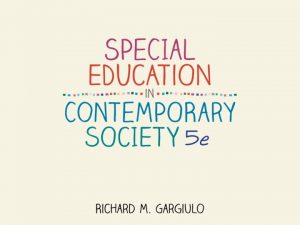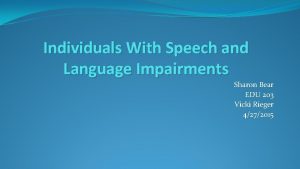A Computational Model of Visual Impairments in Individuals












- Slides: 12

A Computational Model of Visual Impairments in Individuals With Schizophrenia Orren Ravid under supervision of P. I. Prof. Konstantinos Michmizos

The Problem Certain visual impairments have been found and studied in individuals with schizophrenia. As of now, no proposed mechanism has given a completely satisfactory explanation for why these particular impairments occur in individuals with schizophrenia.

A Proposed Mechanism One possible mechanism that has recently been studied in neurons in the human neocortex is apical amplification (AA).

A Quick Aside: Neurons Biological neurons consist generally of three parts: a soma (cell body), dendrites, and an axon. The dendrites of a neuron take in input from other neurons through synapses. Then, the soma integrates these synaptic inputs and converts them to a change in somatic voltage. If this voltage exceeds a certain threshold, then an electrical impulse called an action potential propagates down the axon to reach the dendrites of other neurons.

Apical Amplification Some neurons, such as V 5 pyramidal neurons in the human neocortex or CA 1 neurons in the hippocampus, have two separate compartments for integrating input- the basal dendrites and the apical dendrites. When a certain threshold of input is reached at the apical compartment, this results in the amplification of the input to the basal compartment. It is postulated that apical inputs provide contextual awareness to the sensory inputs that are received at the basal compartment.

Apical Amplification and Schizophrenia The abnormal expression of particular genes may be responsible for inhibiting the propagation of apical inputs to the basal dendrites and therefore disrupting apical amplification. This would lead to decreased contextual awareness and therefore a decreased ability to use contextual knowledge when interpreting sensory inputs.

What does this mean for vision? Context is extremely important for how we process visual stimuli. Our interpretation of the purpose and placement of a particular detail of an image is strongly dependent on its surroundings and background.

The Goal: A Computational Model of AA + Visual Learning Task

Reaching The Goal Produce a model that correctly uses apical amplification in a visual learning task and then modify the parameters in a way that mimics the behavior found in schizophrenia. Make a computational model of AA Apply it to a visual learning task Modify the parameters of the model so its response is similar to that found in schizophrenia

Important Considerations What degree of biological plausibility do we need for our model of a neuron in order to have enough complexity and flexibility to mimic the aberrant behavior that occurs in schizophrenia? Is apical amplification alone mechanistically robust enough to describe the visual impairments we find in schizophrenia or will we need a conjunction of mechanisms for our model to plausibly reproduce these behaviors?

Acknowledgements This project is supported by funding from NSF grant CCF-1852215

Sources Phillips, W A et al. “The effects of arousal on apical amplification and conscious state. ” Neuroscience of consciousness vol. 2016, 1 niw 015. 11 Sep. 2016, doi: 10. 1093/nc/niw 015 Silverstein, Steven M. , and Richard Rosen. “Schizophrenia and the Eye. ” Schizophrenia Research: Cognition , vol. 2, no. 2, 7 Apr. 2015, pp. 46– 55. , doi: 10. 1016/j. scog. 2015. 03. 004.
 Triad of impairments
Triad of impairments Chapter 11 depreciation impairments and depletion
Chapter 11 depreciation impairments and depletion Composite depreciation rate
Composite depreciation rate What is passion in modifiers of human acts
What is passion in modifiers of human acts Chapter 11 depreciation impairments and depletion
Chapter 11 depreciation impairments and depletion Computational model in computer architecture
Computational model in computer architecture Apakah maksud visual pada kata pemrograman visual ?
Apakah maksud visual pada kata pemrograman visual ? Characteristics of computational thinking
Characteristics of computational thinking Computational thinking algorithms and programming
Computational thinking algorithms and programming Grc computational chemistry
Grc computational chemistry Using mathematics and computational thinking
Using mathematics and computational thinking Straight skeleton
Straight skeleton Neuroscience major usc
Neuroscience major usc
